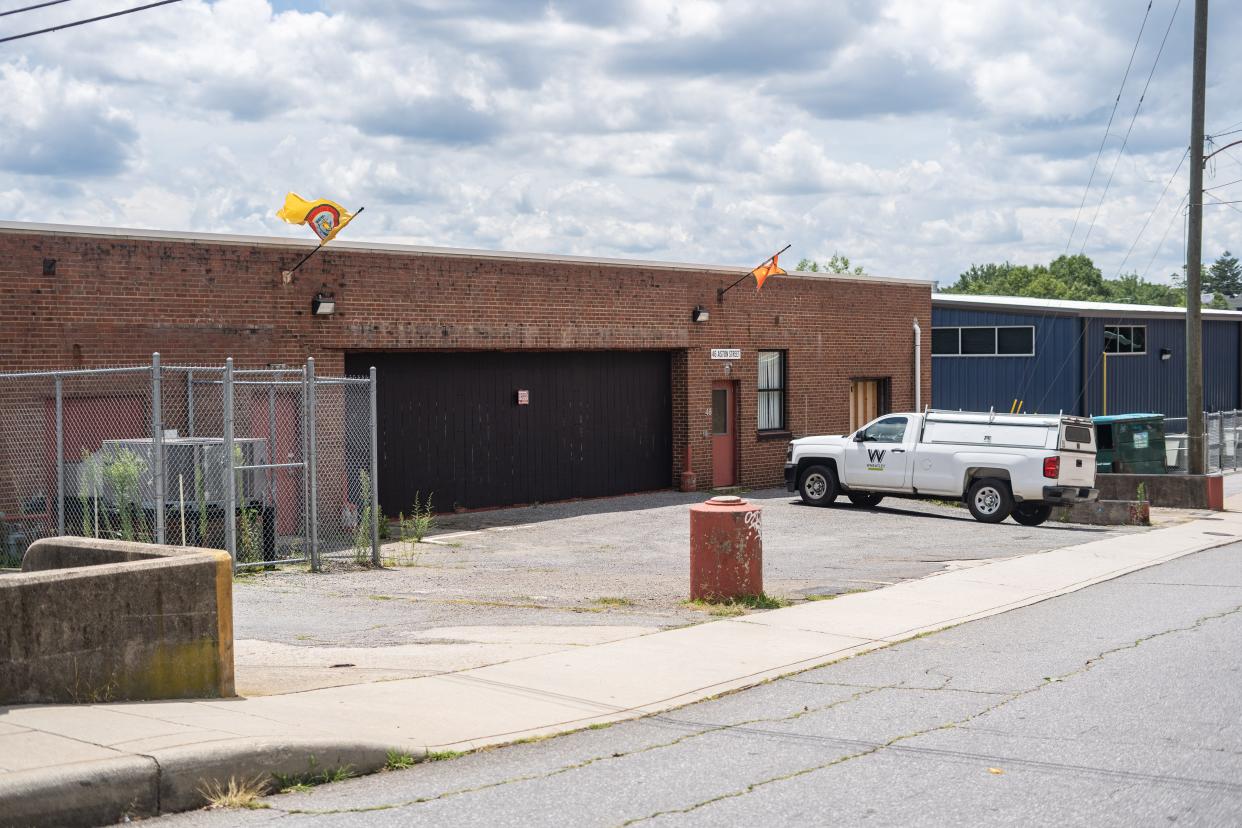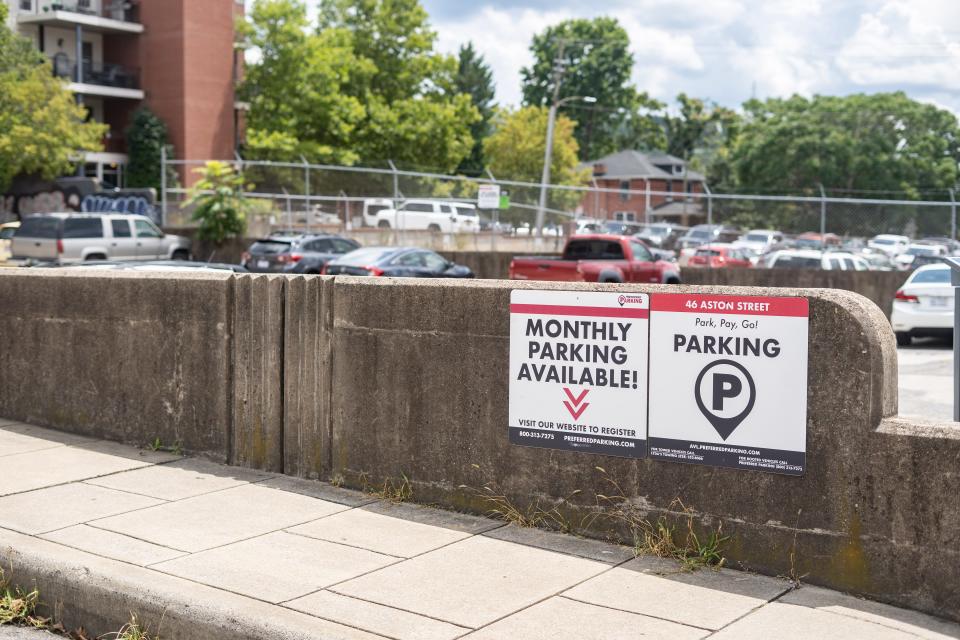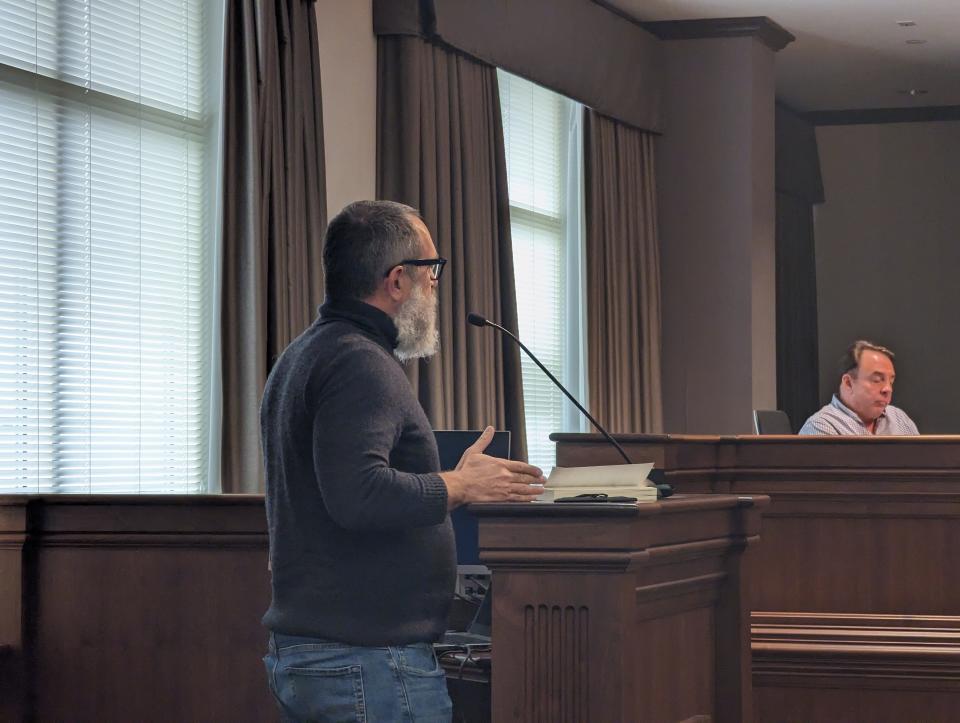Micro-apartments: Asheville council approves $1.9M grant in exchange for affordable units

ASHEVILLE - A $1.9 million tax abatement was awarded to a 231-unit micro-apartment development, Aston Flats, by Asheville City Council in a 5-2 vote July 25, where the discussion was divided by a need for more affordable housing pitted against a housing type entirely new to the city.
The approval of a Land Use Incentive Grant for the Aston Street project comes amid a temporary suspension of this exact program for micro-housing which began in June. Discussions around this project were among the triggers for a closer examination of the policies, which currently are "silent" when it comes to micro-housing.
But City Council members, and the developer, argued that the project was already in the queue — an application for the LUIG grant was submitted as far back as last September — and that to miss this funding opportunity could mean losing 47 affordable units, all of them committed to be set aside for housing voucher holders.
Staff recommended that City Council delay consideration of a grant request until the policy has been revised, which will be done as part of the incoming Affordable Housing Plan update, expected to kick off in August.

But council members, such as Vice Mayor Sandra Kilgore, feared the further they put off the project, the closer they would be to losing it.
"Is it worth it to put that in jeopardy?" she asked.
Developer David Moritz has billed the development as a way to fill the gap: creating walkable workforce housing in a city where rents are the highest in the state, and have jumped 36% in less than two years.
“I think ultimately dense housing downtown is something very important for us,” said council member Maggie Ullman. She said she understands closely considering policy, “but to pause and study when we’re in such a crisis, I’m comfortable with the risk of what we learn, because I think the learning in it of itself will be extremely valuable for our market and the people that need housing now.”

More: A new kind of housing? 2 micro-housing projects could bring 300+ apartments to downtown
Moritz addressed council July 25, and said he would like the project to go up for a vote, be it approval or denial, rather than the decision be pushed down the road.
He said the two most pressing issues in Asheville are affordable housing and climate change. "When I started this project, thinking about it three years ago, those are the things I wanted to address. This is an opportunity for the city to lock in the rates for 47 units for 21 years."
Barry Bialik, an area developer and member of the city's Affordable Housing Advisory Committee, spoke at public comment in emphatic support of the project.
“I appreciate policy, but when our policy is crippling progress, and (is) basically delaying, then so many things we do turn into inaction," Bialik said. "We are in a crisis time and we need action.”
“Everything I do with affordable housing, I look through a very personal lens. Would I live here? And this is a project where I would live.”
He said he understands the need for process, "but we're hurting ourselves."
Deeply affordable: BeLoved takes Asheville's housing crisis into its own hands. What else is being done?
Size of a dorm room
The Aston Street project is proposed for a .47-acre parcel in downtown, currently home to a surface parking lot and one-story garage building.
Near outdoor music venue Rabbit, Rabbit and Asheville Brewing Co., the tiny apartments would offer hundreds of new units of coveted downtown real estate, though each is roughly the same size as a double dorm room at UNC Asheville, ranging from 200 to 350 square feet.
Outfitted with a mini-fridge, microwave and sink, every apartment has a private bathroom. But tenants will have to turn to the floor's shared kitchen and lounge facilities for further amenities.

After voting down the motion to delay, council member Sage Turner moved to approve the LUIG application that evening.
She said while she's ready for the city to review its LUIG policy, "in the meantime, let's not stop what's already in the queue."
Of the seven council members, only Antanette Mosley and Sheneika Smith voted against approval of the grant.
Previous coverage: No more Asheville tiny apartments? City puts micro-housing subsidies on pause
How affordable is it?
City Council has granted a city subsidy for micro-housing only once before when it voted to subsidize affordability for a development proposed on Hilliard Avenue in June 2022, the first application of its kind in the city — the Aston Street project is the second, also by the same developer.
The two projects, an 80-unit development at 217 Hilliard Ave. and a 231-unit development at 46 Aston St., were approved by the city's Planning and Zoning Commission in October 2021 and November 2022. Behind them both is Asheville developer David Moritz, in partnership with his business partner Scott Shapiro, inspired by similar projects in Seattle, Washington, and Nashville, Tennessee.

In Nashville, Moritz said rents for micro-apartments sit at around $1,200 including utilities. He couldn't wager a guess at what Asheville rents would be, but with the reception of the LUIG grant, 47 units, or 20% of the total unit count, would be deeded affordable at 80% of the area median income or below for 21 years.
The tax abatement program was created by the city in 2011 to incentivize the inclusion of affordable housing in developments, using future projected tax revenue to help offset loss in rents from keeping units affordable.
According to the city's affordable AMI appendix, for a one-person household, 80% AMI is a salary of $47,600 and $54,400 for two people. At 80% AMI, maximum rent for an efficiency/studio apartment, the closest classification to micro-housing, with utilities included, is $1,190.
To date, the Hilliard project has not completed the necessary permitting for construction, but Moritz said they've done all but pull the permits as they work to negotiate with contractors while construction costs climb.

What are some policy concerns?
The question of LUIG policies around micro-housing were bounced to multiple city boards, including the Affordable Housing Advisory Committee, whose concerns included:
Whether the incentive should be adjusted to account for the smaller unit size.
What the demand is for smaller unit size, limited kitchen/shared kitchens among those people seeking affordable housing.
Whether micro-housing projects need subsidies in order to be built.
The staff presentation stressed that delaying the decision around a LUIG for the Aston Street project was "not a reflection of the overall quality," rather it was intended to give time for the policy to be revised in "a more holistic way."
Sarah Honosky is the city government reporter for the Asheville Citizen Times, part of the USA TODAY Network. News Tips? Email shonosky@citizentimes.com or message on Twitter at @slhonosky. Please support local, daily journalism with a subscription to the Citizen Times.
This article originally appeared on Asheville Citizen Times: Aston St. micro-apartments clinch city grant for 231-unit development

